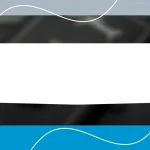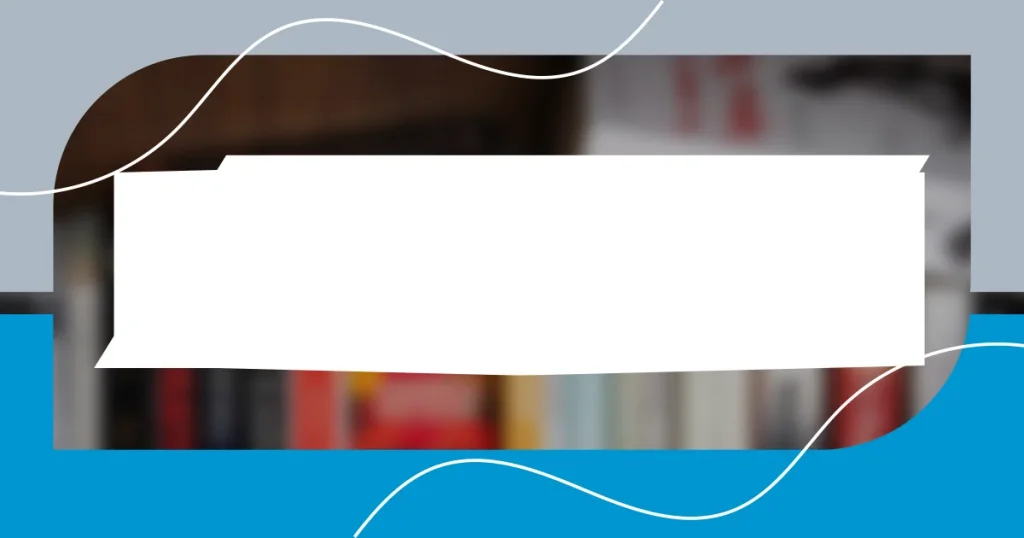Key takeaways:
- Genre labels can enhance categorization and community building but may also restrict artistic freedom and obscure deeper themes in creative works.
- Critiques of genre labeling highlight its potential to limit expression, leading to conversations about the necessity of embracing fluidity in artistic classifications.
- The future of genre labels should emphasize thematic connections and human experiences, moving away from rigid definitions to foster creativity and deeper audience engagement.

Understanding genre labels
Genre labels serve as both a map and a limitation in our exploration of art. I often find myself reflecting on how these labels help categorize the countless forms of creativity we encounter. For instance, when I hear the term “fantasy,” it evokes vivid memories of diving into worlds filled with dragons and magic as a child. But then I wonder—do these labels confine artists, or do they inspire them to define their own paths?
I remember picking up a book labeled as “science fiction,” only to uncover layers of emotional depth and philosophical questions within its pages. This experience made me realize that genre labels can sometimes be misleading. They might suggest a straightforward narrative, yet the best stories often transcend their categories. Don’t you think it’s fascinating how a label can trigger expectations that may not align with the experience?
Labels can also create a sense of belonging. I sometimes enjoy connecting with others who share a love for a specific genre, discussing our favorite works passionately. But I also feel a slight tension—shouldn’t we appreciate art as a fluid experience? The interplay between our emotional responses and the rigidness of genre can be complex, but it’s precisely this complexity that deepens our appreciation for varied forms of expression.

Importance of genre labels
Genre labels play a crucial role in navigating the artistic landscape. I often think about how they serve as reference points, guiding our choices in a world overflowing with options. For example, when I seek a mystery novel, the label helps me sift through countless titles, connecting me with stories that thrill me. At the same time, I wonder if these labels sometimes overshadow the creativity and innovation that defy categorization.
- They help readers find what they love quickly.
- Genre labels create communities based on shared interests.
- They can open up dialogues about storytelling techniques and themes.
In moments of reflection, I realize that genre labels can shape expectations, sometimes in surprising ways. I once attended a workshop on horror writing, expecting straightforward thrills. Instead, I uncovered a layered exploration of societal fears that resonated deeply with me. This experience underscored the importance of genre labels; they not only categorize but also influence our perceptions and interactions with art. It’s fascinating how a simple label has the power to change our understanding of a work entirely.

Criticism of genre labeling
Genre labels often face criticism for restricting artistic expression. I recall discussing music genres with friends, and we found ourselves stifled by rigid classifications. For instance, we debated whether a particular song was rock or pop. This led me to wonder if such labels dilute the richness of creativity. Why can’t a song simply be both? It feels like they box artists into a confined space, stifling innovation and the discovery of unique blends that challenge expectations.
Many argue that genre labels simplify the complexity of art, but I think they can mislead as well. There was a time when I picked up a novel believably tagged as “romance,” only to find thought-provoking themes about identity and self-discovery embedded within. It raises an important question: why should a book that offers a broader narrative be stuck in a narrow genre? Such instances highlight the limitations of genre, leaving me to ponder whether we miss out on deeper connections by categorizing art too strictly.
Yet, complex discussions around genre continue to enrich our artistic conversations. I’ve attended panel discussions where authors share their journeys of defying genres. One writer spoke passionately about blending fantasy with realism, illustrating how absorbing such diverse influences leads to works that resonate with many. It made me question not just the role of genres but the endless possibilities when we embrace art’s fluidity. Are we truly missing something when we adhere too closely to labels?
| Criticism Point | Personal Reflection |
|---|---|
| Limitation of Expression | Feeling confined by labels restricts creativity. |
| Misleading Categorization | Labels can lead us to overlook deeper themes. |
| Discussion and Exploration | Conversations about genre create valuable insights. |

Impact on audience perception
When I reflect on how genre labels shape audience perception, I realize they can create a certain set of expectations before a reader even turns a page. I remember picking up a novel labeled “young adult.” I anticipated a straightforward love story, yet I was surprised to find complex themes about mental health woven throughout. Didn’t that label limit my initial perspective? It’s fascinating to think about how I might have approached the book differently if it had been categorized simply as “literature” instead of “young adult.”
The impact of genre labels is not just about expectations; they also influence how audiences connect with stories. For instance, I once attended a film festival where the organizers carefully selected films that blurred genre lines, like a mix of comedy and horror. The audience’s response was intriguing—they laughed loudly in moments I thought were meant to be chilling. It made me question: do genre labels sometimes hinder the audience’s experience by conditioning their emotional responses? That festival was a revealing moment, highlighting how narrow perceptions based on labels can limit the depth of engagement with a film.
Furthermore, I notice that genres can create communities, but those communities might also foster exclusivity. I joined a book club focused on “science fiction,” eager to connect with fellow enthusiasts. However, some members seemed to dismiss works that they deemed too “experimental.” It got me thinking about the importance of inclusivity—how often do we overlook impactful stories simply because they don’t fit neatly into our genre preferences? It’s almost ironic: while genre labels can bring people together, they can also fragment the very conversations that enrich our understanding of art.

Balancing creativity and classification
When it comes to balancing creativity and classification, I often find myself torn between the comfort of labels and the desire for artistic freedom. I can recall a time when I ventured into creating a mixed-media piece that incorporated painting, photography, and poetry. Initially, I sought to label it as “multimedia art,” but then I realized that this classification seemed too limiting. Why should I restrict my creation to a single genre when the beauty of art lies in its ability to transcend boundaries?
Moreover, there’s something exhilarating about genres being fluid rather than fixed. I remember attending a live performance where musicians seamlessly transitioned from classical to electronic beats. It struck me that the crowd wasn’t just enjoying different styles; they were engaging in something transformative. This experience brought to the forefront a critical thought: do we embrace creativity when we permit genres to evolve, or do we box ourselves in by clinging to the old labels? It’s as if we’re standing on the edge of a vibrant world ready to explore if we let go of strict classifications.
Navigating the web of creativity and classification, I sometimes feel like an explorer in uncharted territory. Not long ago, I sat in a workshop where we encouraged participants to create stories without the confines of genre. The results were astonishing. One fellow writer crafted a narrative that merged horror with humor, leading to uncanny reflections on human nature! This made me wonder: isn’t there a wealth of untapped creativity waiting for us if we shake off the shackles of conventional labels? Engaging in this kind of exploration feels like unlocking new dimensions of expression, illuminating the lesser-known pathways of art.

Navigating genre labels in marketing
Navigating genre labels in marketing can feel like walking a tightrope. I recall a time when I tried to market my own poetry collection. I struggled to find the right label—should it be “contemporary poetry” or “experimental verse”? The choice was significant; the label not only shaped potential readers’ expectations but also determined how booksellers would place it on their shelves. Isn’t it interesting how a simple genre label can dictate a reader’s journey before they even open the book?
I’ve noticed that audiences often gravitate toward familiar genres, seeking comfort and predictability. At a recent marketing conference, someone presented an innovative campaign for a genre-blending novel that challenged traditional labels. They showcased trailers that emphasized the story’s unique elements rather than confining it to a single genre. This approach sparked a lively discussion, pushing me to think: can we shift the narrative to focus on themes instead of genres? By promoting stories that defy simple classification, we might just open doors to broader engagement and understanding.
The challenge lies in effectively communicating the essence of a story while respecting its unique spirit. When I launched a podcast, I initially labeled it “storytelling,” but soon realized it encompassed much more. By describing it as “exploring the human experience through diverse narratives,” I captured a wider audience. This shift made me wonder—how often do we miss opportunities because we hesitate to redefine the rules? Embracing a more fluid approach to genre labels could be the key to unlocking richer connections in marketing.

Future of genre labels
The future of genre labels starts to feel like an open canvas, inviting a blend of creativity that I find exhilarating. Just the other day, I stumbled upon a playlist that combined elements from classical, jazz, and hip-hop. It made me think—what if we embraced this mindset in storytelling? Instead of confining a narrative to a single genre, why not celebrate the unique fusion of styles that define our experiences? By letting genres intermingle, we unlock endless possibilities for creativity.
Reflecting on my own experiences, I’ve often felt the boundaries of genres stifling my expression. I once penned a short story that danced between romance and science fiction, and it was like breathing fresh air into my writing process. It left me wondering: would readers gravitate more towards a label that speaks to their individuality rather than sticking to traditional genres? As we move forward, I’m convinced that flexibility in labeling could lead to deeper, more personal connections between creators and their audiences.
Looking ahead, I envision a landscape where genres are more of a conversation starter than a definition. Recently, I attended a literary festival where an author discussed their work that defied easy classification. People were drawn to the discussion not because of the genre but because of the themes and emotional truths they found relatable. This experience reinforces my belief that emphasizing the human experience in narratives could reshape how we understand and appreciate art. Isn’t it time we focus less on what to call something and more on the stories it tells?
















